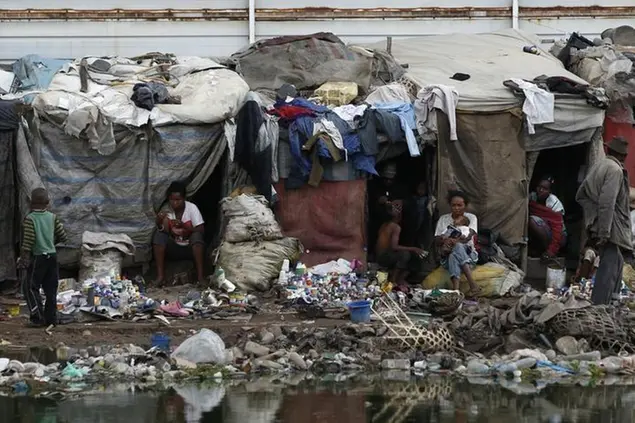PHOTO
ANTANANARIVO- The cyclone that battered parts of Madagascar over the weekend killed at least 20 people, displaced 50,000 and destroyed crops that were close to being harvested, the head of the United Nations' food aid agency in the country said on Monday.
Cyclone Batsirai slammed into the Indian Ocean island late on Saturday, knocking down houses and electricity lines along the southeastern coastline until it moved away late on Sunday, leaving some towns and villages partially or totally destroyed.
"The impact was severe and harsh and we are still counting casualties," said Pasqualina Di Sirio, country director for the World Food Programme (WFP) in Madagascar.
With a population of nearly 30 million, Madagascar had already been dealing with the aftermath of Cyclone Ana, which killed 55 people and displaced 130,000 just two weeks earlier.
Cyclone Batsirai struck a different part of the island, further south, where the population is facing a precarious situation in terms of food supplies because of a severe drought.
Di Sirio said the impact of the cyclone, particularly the destruction of rice crops that were about two weeks away from harvesting, had made a bad situation worse and would be felt for six months. Fruit and vegetable patches had also been destroyed.
"This means major losses in terms of food security for the population," she said by telephone from the capital Antananarivo.
Emergency rescuers were struggling to reach the worst affected areas because 12 roads and 14 bridges were impassable, while rising river levels were threatening to displace more people, officials said.
The state disaster relief agency said more than 200 schools were partially or fully destroyed, leaving more than 10,000 children unable to attend lessons.
President Andy Rajoelina flew into the coastal town of Mananjary, normally about 500 kms (311 miles) by road southeast of Antananarivo. Land routes to Mananjary were cut off due to flooding and the town was reported to be devastated.
Rajoelina said on his Facebook page he was there to show solidarity with people who had lost loved ones and homes, and to see for himself what was needed in terms of aid.
The WFP was conducting an aerial survey of affected areas to better assess needs, but the results of that were not yet known.
Di Sirio said water levels were still rising, particularly in one area near two rivers and a canal, and people there may yet be forced to flee their homes.
(Additional reporting by Maggie Fick in Nairobi, Writing by Estelle Shirbon; Editing by Emelia Sithole-Matarise) ((estelle.shirbon@thomsonreuters.com))
